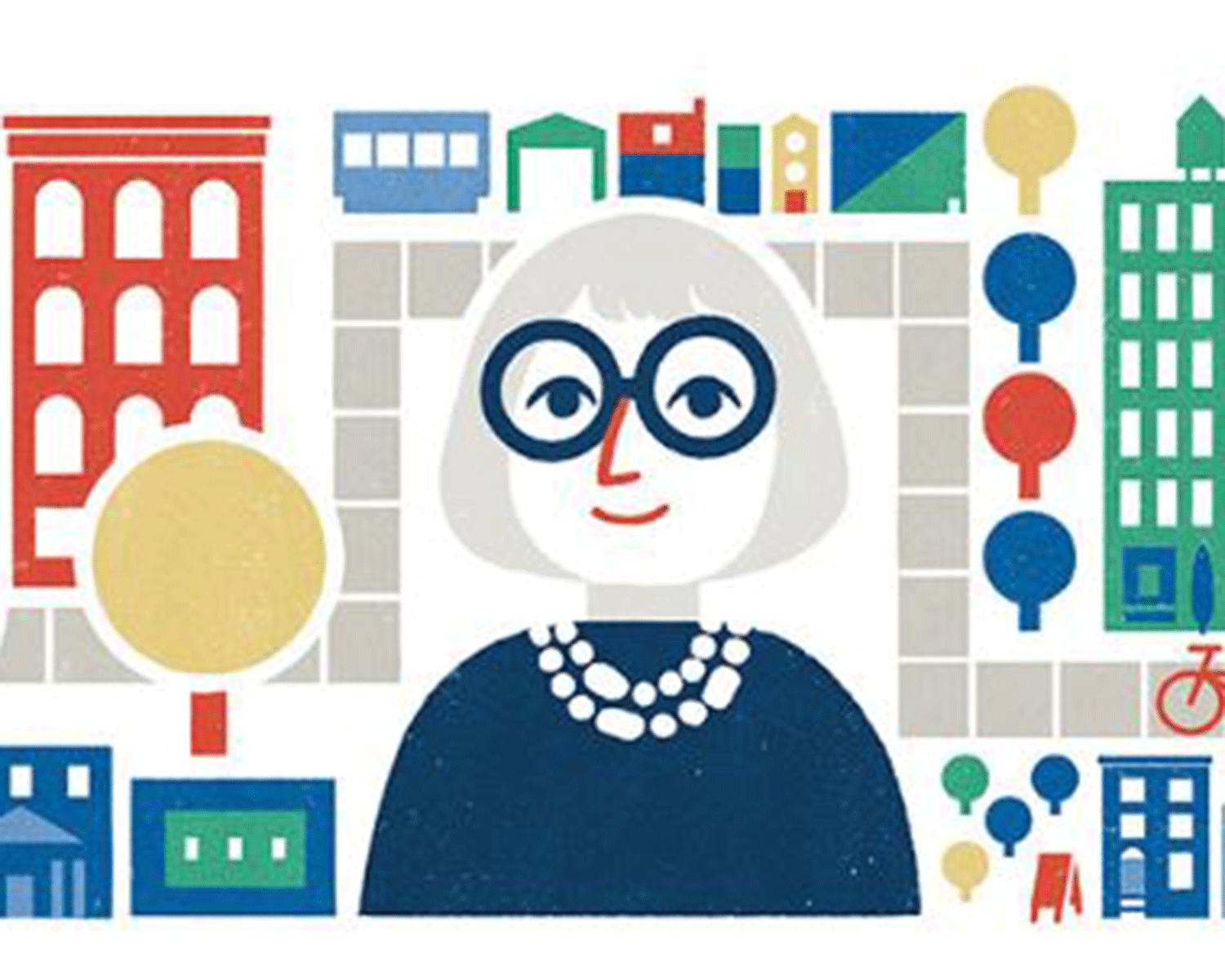Jane Jacobs: 3 facts about the author and activist as a Google Doodle marks her 100th birthday
'Respect the strips of chaos that have a weird wisdom of their own'

Your support helps us to tell the story
From reproductive rights to climate change to Big Tech, The Independent is on the ground when the story is developing. Whether it's investigating the financials of Elon Musk's pro-Trump PAC or producing our latest documentary, 'The A Word', which shines a light on the American women fighting for reproductive rights, we know how important it is to parse out the facts from the messaging.
At such a critical moment in US history, we need reporters on the ground. Your donation allows us to keep sending journalists to speak to both sides of the story.
The Independent is trusted by Americans across the entire political spectrum. And unlike many other quality news outlets, we choose not to lock Americans out of our reporting and analysis with paywalls. We believe quality journalism should be available to everyone, paid for by those who can afford it.
Your support makes all the difference.Jane Jacobs, a little-known urban activist outside of city planning circles, is being celebrated by Google on what would have been her 100th birthday.
The Canadian-American was not taken too seriously when she wrote "The Death and Life of Great American Cities" in 1961 and yet experts now say her insights have been impactful and remain relevant.
She reportedly fell in love with Greenwich Village in New York City aged 19 after she moved there from Pennsylvania during the Great Depression.
Stints as a freelance writer, editor and journalist led her to being looking into "urban blight", from where Ms Jacob's interest in architecture and city planning took a more serious form.
Here are three facts you need to know about an extraordinary ordinary woman:
1. The Death and Life of Great American Cities is one of the most influential in the history of American city planning
Jacobs had already been a feature writer for the Office of War Information and at the Architectural Forum, and had come to her editors' attention by writing critical pieces of new developments they thought were a good thing.
One project she took aim at was in Philadelphia, saying developer Edmund Bacon had failed to show consideration for poor African American citizens living there.
When given the chance to stand in for her editor at Harvard University, she did not mince her words: "Respect, in the deepest sense, the strips of chaos that have a weird wisdom of their own not yet encompassed in our concept of urban order."
2. She took on the "master builder" of the mid-20th century
Robert Moses, an important city planner in New York who wanted to build a big "expressway" through Washington Square Park, next came to Ms Jacobs' attention.
She mobilised famous figures behind her Joint Committee to Stop the Lower Manhattan Expressway, including anthropologist Margaret Mead, Eleanor Roosevelt, Charles Abrams and Lewis Mumford.
Together they succeeded in blocking the project, which is a bit like Save Brixton Arches managing to stop developments in Canary Wharf today.
3. She was a local hero but only recognised more widely later on
Surprisingly given the media coverage, the Expressway plans resurfaced again several years later to general outrage.
In her efforts to end the destruction of communal spaces once and for all, Ms Jacobs was accused of "inciting a crowd", "disorderly conduct" and "obstructing public administration".
This, along with not being a man, meant she was often disregarded by the most well-respected thinkers of the time.
Referred to as a "crazy dame" and "housewife", and only given passing reference by a biographer she had a powerful influence on, she now has her rightful place among critics - some ten years after she died.
Join our commenting forum
Join thought-provoking conversations, follow other Independent readers and see their replies
Comments